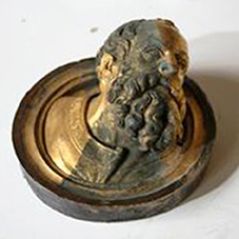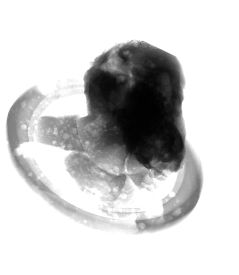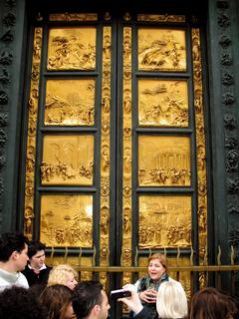MLZ is a cooperation between:
 > Technische Universität München
> Technische Universität München > Helmholtz-Zentrum Hereon
> Helmholtz-Zentrum Hereon
 > Forschungszentrum Jülich
> Forschungszentrum Jülich
MLZ is a member of:
 > LENS
> LENS > ERF-AISBL
> ERF-AISBL
MLZ on social media:

MLZ (eng)
Lichtenbergstr.1
85748 Garching
Neutrons reveal the secrets of prophets
Art history and physics do not have much in common at first glance. Within the European Research Project “Ancient Charm”, the two disciplines are, however, closely linked. At the research neutron source Heinz Maier-Leibnitz (FRM II) at the Technical University of Munich (TUM), historical objects of great value can be analyzed using neutrons. Physicists, archaeologists and restorers at the Heinz Maier-Leibnitz Zentrum (MLZ) in Garching are able to investigate non-destructively how the objects were manufactured and which methods can be best employed to restore them.
Hundreds of tourists marvel at the bronze doors of the Baptistry in Florence every day. The Renaissance sculptor Lorenzo Ghiberti depicted scenes involving the Old Testament prophets and evangelists in his masterpiece created during 1425 to 1442. One relief of Florentine art work was analyzed by the physicists Lea Canella (FRM II) and Ralf Schulze (University of Cologne) using the instrument PGAA (Prompt Gamma Activation Analysis) at the MLZ.

Prophets head of the Florence Gates of Paradise, which was examined at the FRM II. The left part of the head was cleaned with a laser technique, the right with a chemical method, the center is still uncleaned. Photo: Ralf Schulze, TUM © Ralf Schulze/TU Muenchen
Restorers in Florence had tried two different methods to clean the heads of the prophets: one part of the blackened bronze surface was purified with a laser, another part was chemically treated with so-called Rochelle salts, and a third part of the head was left dirty. When neutrons penetrate the material and collide with different atoms, characteristic gamma rays are emitted. The detection of the specific gamma irradiation pattern gives information about the elemental composition of the objects from the surface down to a depth of 1 mm below the gilding. During the analysis, the scientists found out that the chemical restoration method was the most efficient and therefore most suitable. Less chlorine was found on the chemically cleaned surfaces; chlorine is one component of the black residue and is involved in the corrosion process.

Radiography by ANTARES revealed that one prophet's head contained a hole from the first cast almost 600 years ago. Photo: Martin Mühlbauer, TUM
Another interesting result for art historians required a second examination of the bronze heads using the instrument ANTARES (Advanced Neutron Tomography and Radiography Experimental System) at the MLZ. Here, not only the surface, but the entire bronze sculpture was irradiated with neutrons. The resulting radiographic image showed that one figure contained a hole from the first cast almost 600 years ago which was later filled in by the Italian Artist Lorenzo Ghiberti.
The non-destructive application of neutrons provides unique information about historical art objects. To date, Garching offers the only research neutron source worldwide with a focused neutron beam providing the required high intensity for the analysis of these valuable historic objects.
Original publication
A nondestructive stratigraphic and radiographic neutron study of Lorenzo Ghiberti’s reliefs from paradise and north doors of Florence baptistery. Journal of Applied Physics, 106, 074909, 2009
Links:
MLZ is a cooperation between:
 > Technische Universität München
> Technische Universität München > Helmholtz-Zentrum Hereon
> Helmholtz-Zentrum Hereon
 > Forschungszentrum Jülich
> Forschungszentrum Jülich
MLZ is a member of:
 > LENS
> LENS > ERF-AISBL
> ERF-AISBL
MLZ on social media:



